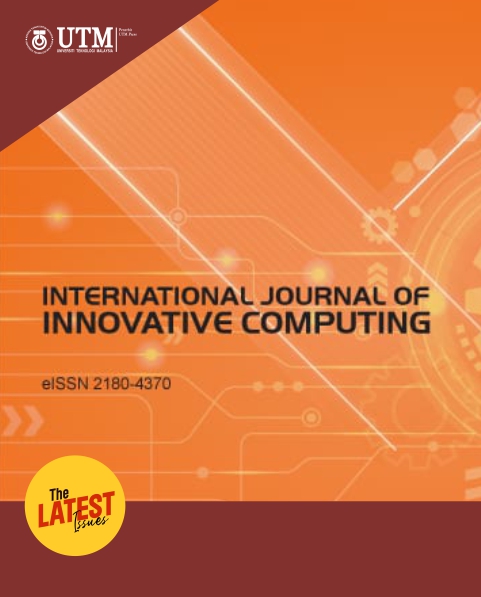About the Journal
The International Journal of Innovative Computing (IJIC), e-ISSN: 2180-4370 (Online) is an open-access journal aimed to provide coverage of high-quality, peer-reviewed original research and review articles of interest to academic and industrial researchers in all areas of computing. Submissions must be clearly written and make a significant technical contribution. The International Journal of Innovative Computing is published online two times a year in June and December.
In general, only original papers will be considered. Submission of a manuscript to the journal is a representation by the author that the manuscript has not been published or submitted simultaneously for publication elsewhere. However, papers previously presented in conference proceedings of limited circulation may be submitted in revised form. If a paper has appeared previously, in any form, authors must clearly indicate this in both their cover letter and in a footnote on the first page of the paper.
Manuscripts in the following categories will be considered for publication: Research articles, reviews, and new frameworks, models, algorithms, methods, and technologies.
As a non-profit publication, IJIC is supported by Universiti Teknologi Malaysia and published by Penerbit UTM Press. The journal is committed to providing genuine open access to scholarly content, offering its services free of charge to both authors and the research community. No fees are required for article submission or processing. Additionally, UTM’s Department of Digital Services (UTM Digital) ensures the secure archiving and backup of all scholarly content on physical servers.
JOURNAL TITLE
International Journal of Innovative Computing (IJIC)
JOURNAL TITLE ABBREVIATION
Int. J. Innov. Comput.
e-ISSN.
2180-4370
WEBSITE ADDRESS
https://ijic.utm.my/index.php/ijic/index
CORRESPONDING E-MAIL ADDRESS
Email: journal_utm@utm.my
JOURNAL LOGO

PUBLISHING RIGHTS
Author(s) give International Journal of Innovative Computing the right to publish the article
Designate Penerbit UTM Press, Universiti Teknologi Malaysia as the original publisher
TYPES OF ARTICLES
Full Research Article; Review Article
PEER-REVIEW PROCESS
Double-blind Peer-review process
OFFICIAL LANGUAGE
The journal article only accepts English-language content.
PUBLICATION SCHEDULE/FREQUENCY
Two issues (June and December) in one volume per year
ARTICLE SUBSCRIPTION FEE
Open access
PUBLICATION/ARTICLE PROCESSING FEE
Free of costs
JOURNAL INDEXING
Malaysia Citation Index (MyCite)















